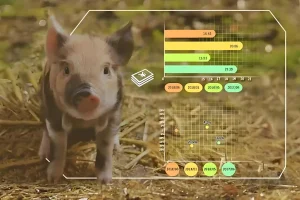China’s “Diversified Food Supply” Strategy: The Rising Role of Edible Fungi

The State Council’s “Guidelines for Building a Diversified Food Supply System” (September 2024) positions edible fungi as a key component in China’s food security blueprint. With the concept of **”Big Food Vision”** (Da Shiwu Guan) now central to agricultural policy, let’s examine how mushrooms are becoming strategic assets in the nation’s push for sustainable nutrition.
Policy Drivers Reshaping Food Systems
- 2024 Central Document No.1 prioritizes “multi-source food development”
- 2024 Government Work Report mandates “full-spectrum food resource utilization”
- Target: Increase non-traditional food sources (e.g., fungi, algae) to 18% of total supply by 2030
Untapped Opportunities: Expert Insights
Dr. Cao Hui, Director of Industrial Research at Ministry of Agriculture’s Rural Economy Research Center, identifies critical growth areas:
“While aquaculture gets attention, edible fungi remain undervalued despite their:
- 40% higher protein efficiency vs. conventional crops
- Zero arable land requirement for production
- Carbon-negative cultivation potential”*
3-Point Action Plan to Transform Mushroom Production
1. Genetic Innovation
- Build national mushroom germplasm database (Current status: Only 23% of 1,800+ edible species cataloged)
- Accelerate functional strain development:
▶️ Immune-boosting Ganoderma varieties
▶️ Iron-enriched Agaricus hybrids for anemia prevention
2. Smart Cultivation Tech
- Transition from traditional sheds to AI-controlled vertical farms
- Case Study: Fujian’s 5G-connected shiitake facilities yield 210% higher ROI
- Government subsidies cover 30% of automation equipment costs
3. Value-Added Processing
| Product Category | Emerging Innovations |
|---|---|
| Convenience Foods | Microwave-ready lion’s mane “steaks” |
| Nutraceuticals | Cordyceps-loaded sleep gummies |
| Biomaterials | Mycelium-based packaging replacing plastics |
Global Implications
- China’s fungi R&D investment surged to **$480M in 2024** (Source: National Bureau of Statistics)
- International partners can leverage:
✅ Joint ventures in mushroom biorefineries
✅ Technology transfers for modular farming systems
✅ Co-development of FDA/EFSA-compliant supplements
More:
- 2025: The Year Agriculture Enters the AI Era – A New Wave of Transformation on the Horizon IAgricultural AI Revolution
- Algarikon Zero Project: How a Spanish Firm Transforms Invasive Algae for Edible Mushroom Cultivation
- 🔍 Research Uncovers Key Mechanisms of Morel Strain Degradation
- Spain: Edible Mushrooms Found to Alleviate the “Salty” Dilemma of the Meat Industry
- Yunnan’s Morel Mushroom Industry: Current Status and Prospects


